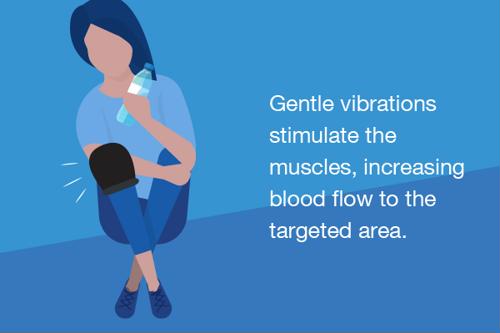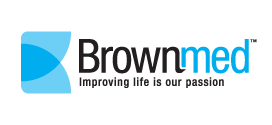
Intellinetix products are rechargeable and easy-to-use devices that target pain with localized, portable vibration therapy.
Feel that? That vibration could be the key to relieving your chronic pain and muscle soreness.
Here are the answers to all of your questions about vibration therapy:
How does it work?
This type of therapy transmits gentle vibrations throughout the body that stimulate the muscles, causing them to contract and relax. This increases blood flow to the areas that need it for healing. Certain vibrations also promote the production of osteoblasts, which are important for bone growth and repair. Sending gentle, massaging sensations to replace the discomfort, therapy machines and products result in a soothing feeling of pain relief, free of any electric shocks.
There are two different kinds of vibration therapy: whole-body and localized. While the former requires lying on a vibrating platform, the latter involves a smaller device that can focus on one particular area of the body.
What are the risks and benefits of vibration therapy?
Whole vibration therapy or transcutaneous electrical nerve stimulation in general can sometimes be risky for people who are on blood thinners or suffer from severe diabetes, as well as women who are pregnant. Plus, if the intensity of the vibrations is too high, it can cause severe back pain or injury. For most people, targeted vibration therapy is a safer option. Unlike TENS, localized therapies, such as Intellinetix products, are safe for pregnant women and people with pacemakers. Plus, Intellinetix offers adjustable levels of vibration to suit personal thresholds and does not reach intensities that incite back pain or injury.
Many people have a positive experience with both whole body and localized vibration therapy, claiming effects such as:
- Improved circulation.
- Boosted metabolism.
- Alleviated stress.
- Reduced joint pain.
- Improved bone and muscle strength.
Some research also suggests that vibration therapy can be beneficial for those who follow a regular workout schedule. A study published in the Journal of Athletic Training concluded that the therapy prevented delayed onset muscle soreness, when conducted before the exercise session. These kinds of results suggest that vibration therapy may improve overall athletic performance. Some gyms even have vibrating fitness machines, which can improve muscle strength in elderly adults and aid in weight loss, according to Livestrong.
"Users can experience notable improvements in spine, joint and muscle pain."
Which conditions does vibration therapy treat?
Vibration therapy is often used to reduce chronic pain caused by conditions such as arthritis or to treat acute injuries, offering focused relief to the area in pain. It can even be beneficial for relieving migraine and severe headache pain. A recent study, published in Complementary Therapies in Clinical Practice, tested the effects of whole-body vibration therapy on patients with fibromyalgia, and found that it was effective in reducing symptoms. Plus, Intellinetix research conducted with Brigham and Women's Hospital and Harvard Medical School, found that more than half of the participants felt vibrating gloves were helpful in reducing pain caused by osteoarthritis.
Are you ready to start vibration therapy?
While you don't need a prescription to use vibration therapy methods, it's always a good idea to talk to your doctor before committing to it. When you're ready to start, check out Intellinetix products, which are rechargeable and easy-to-use devices that target pain with localized, portable vibration therapy. They offer options for your hands, knees, elbows and shins, providing relief from injury, improving strength or reducing soreness from regular physical activity. With sessions of as little as 20 minutes, you can experience notable improvements in spine, joint and muscle pain.
